Join Our Groups
TOPIC 1: THE SCOPE OF COMMERCE
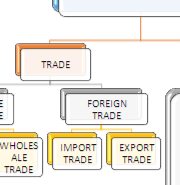
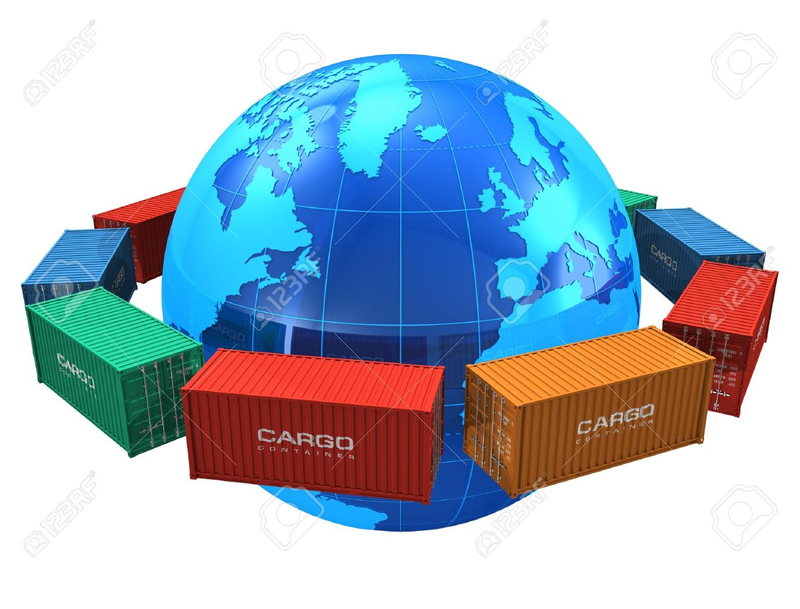
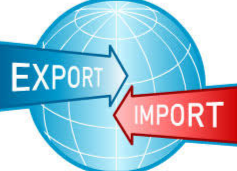
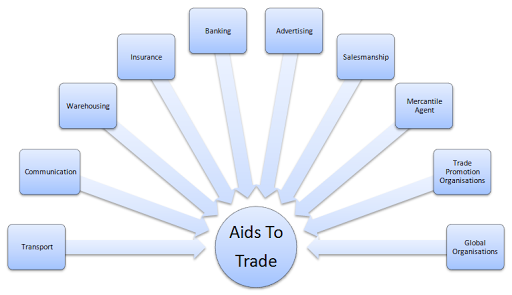
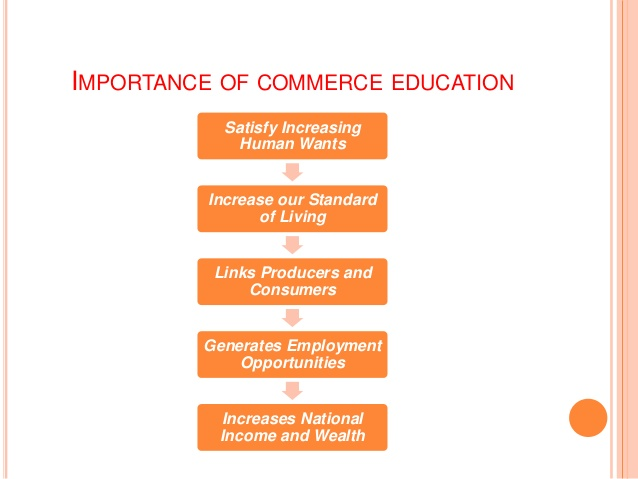

The Scope of Commerce
The Nature and the Subject Matter of Commerce
Explain the nature and the subject matter of commerce
THE MEANING OF COMMERCE
The scope of commerce implies the coverage of commerce, modern commerce has become so wide. It comprises of the study of all activities in the transfer (distribution) of goods and services from the producers to consumers. Activities like transportation, communication, insurance, banking and advertisement have played a huge role in development of commerce. Trade within the boundaries and across the nation's boundaries makes commerce to acquire international status. Example, a farmer as a producer needs to find people to buy his/her produce. Those buyers are called consumers. For those products to reach the final buyer( consumer), means of transport like roads, railways and airways need to be better.
Example of those activities include trade, transportation, banking, insurance and advertising.
Please use a regular YouTube link.
The study of commerce can help you to get the knowledge on three basic areas. In its broad sense commerce covers the following areas:-
- The study of trade, which is the main activities in the distribution of goods and services
- The study of auxiliary services(aids to trade) that make trade possible
- The study of how trade and aids to trade could be organized so as to satisfy the needs of a consumer in the most efficient way.
COMMERCE is a branch of production which deals with the exchange of goods and services and all activities that facilitate the transfer of such goods and services from producer to final consumers. Exchange is an act of buying and selling. It is a major part of commerce.
Please use a regular YouTube link.
DIVISION OF COMMERCE
Commerce is divided into two branches, which are:
- Trade
- Aids to trade
Commerce Flow Chart
Draw the commerce flow chart
Example 1
A commerce flow chart is used to show exactly what is covered in its scope. The study of commerce involves trade and aids to trade. That means, or a product to reach to the final buyer, a trader has to arrange on advertisement, transport and sometimes insurance. We can see in our chart that, trade can be done inside a country(home trade) or among countries(foreign trade).

1).TRADE:
Refers to the process of buying and selling of goods and services, with the intention of generating profit. A person who engages in trading activities is known as a trader. The video below shows how students from one school were trying to figure out on why nations trade. They further explore on how and how countries specialize to produce the goods.
Please use a regular YouTube link.
Trade is sub divided into two main branches, which are: a) Home trade and b) Foreign trade.
A. HOME TRADE
This is the buying and selling of goods and services within in a country. Home trade is divided into two main branches;- Retail trade and Wholesale trade. The video below shows some of goods which were show in International Trade Exhibition which took place in Diamond Jubilee. It is very important for a country to trade its own produce. This help to reduce number of people who are jobless and to satisfy people's wants.
Retail trade: This is the buying of goods from producer or wholesalers and selling them to the final consumers. Retailer is a person who buys in small quantities from the wholesaler or producer and then sells it to the final consumer. Example in Tanzania, particular in Dar-es-Salaam, you can find more wholesalers in Kariakoo market. The retailers buys from Kariakoo and sell the goods to in the streets.
Wholesale trade: This is the buying of goods in large quantity from manufacturer or producers and selling them to other business men in smaller quantity at lower price. Wholesaler is a trader who buys in bulky (large quantities) from the producers and sells it in small quantities to the retailers or straight to the consumers.
I have summarized for you the differences between a wholesaler and a retailers below.
- Wholesalers are connecting links between the manufacturers and the retailers while retailers are connecting links between the wholesalers and the customers.
- Wholesaler purchase goods in large quantities from the manufacturers while retailers purchase goods in small quantities from the wholesalers.
- Wholesalers deal in limited number of products, retailers deal in variety of products for meeting the varied needs of consumers.
- Wholesalers need more capital to start their business but being a retailer is simple, they can start business with limited capital.
- In wholesaling process, the display of goods and decoration of premises is not necessary for them as for retailers they lay more emphasis on window display and proper decoration of business premises in order to attract the customers.
B.INTERNATIONAL TRADE (FOREIGN TRADE)
International trade-is a trade between one nation and other nations. It is the exchange of goods and services across the national borders. For example, exchanging the goods and services between Tanzania and China. In Tanzania, as a country we sell minerals and farm produce such as coffee abroad. In Tanzania, we do not produce cars, machinery and other equipment which require high technology, then we have to buy them from other countries. this is what is called an international trade. A trade between one nation and the other nation.With the improvement of transport and communication, countries are able to trade very efficiently. This is of very crucial value to countries economies because every nation benefit from it.

International trade is divided into two types:
- Export trade
- Import trade

Export trade is the process of selling goods and services to other countries. For example, selling of Tanzania gold to China.
Import trade: is the process of buying goods and services from other countries. For example, buying of mobile phones from china and selling them locally in Tanzania.
2. AIDS TO TRADE
Aids to trade are all the activities which facilitate trade. Aids to trade make trade less difficult to carry out. Examples of aids to trade include the following:
- a) Communication: is the transmission of information from one point or person to another point or person. People can exchange information among each other either orally or using telephone,internet,radio and television.
- b) Transportation: This refers to the movement of physical goods and people from one place to another. Moving of goods from one place to another can be through land using motor vehicles, over water using marines or air using planes.
- c) Warehousing: Refers to the storing of goods so that they are made available when and where they are required. Goods which can be stored include crops, and perishable foods like fish, meat and fruits.
- d) Insurance: a system of pooling risk together by contributing small sums of money to a common pool which in the long run, compensate the people or a person who suffers from actual loss. Examples of risks or losses are theft, robbery, fire, floods and accidents.
- e) Banking: Helps to finance trade. It also provides a safe place to keep money, and provides means of payments and lending money in a form of loan to businesses.
- f) Advertising: Is a process of letting consumers know about what goods and services are available in the market. Advertising of goods and services to public can be done through newspapers, magazines, radio, televisions, banners and cinema.
WE ARE AIDS TO TRADE!YES WE MAKE IT HAPPEN VERY SMOOTHLY.

Importance of Commerce in Everyday Life
Explain the importance of commerce in everyday life
COMMERCE......IS IT OF ANY HELP?. YES, IT IS VERY IMPORTANT.

IMPORTANCE OF STUDYING COMMERCE IN EVERYDAY LIFE.
- It helps in the development of a country’s economy. Trade and aids to trade enable the goods produced to reach the final consumers, and therefore increase the production and the national income.
- The study of commerce is crucial to producers. They are able to study the behavior of their buyers in the market which is very important in their choice of what to produce. Example, It is rarely to find a jacket sold in the store in summer time. This is how producers reacts, If a good is available, they produce less and less but if the good is not available, they produce more and more of it.
- The knowledge of commerce enables learners to understand other fields of knowledge like economics. The knowledge of commerce also, enables economists to get better understanding about the fields of studies in economics, such as international economics.
- It enables businessmen and women to conduct trade. The knowledge of commerce enables businessmen and women to conduct trade by simply knowing the means of exchange and sources of supply.
- It is necessary for satisfying human wants through trade and aids to trade. Trade and aids to trade involve changing the situation of a commodity from where it is produced to the place where it is needed for consumption. In this process, commerce creates utility.
Difference between Commerce and Economics
Distinguish between commerce and economics
The main distinction between economics and commerce is that, the subject matter of economics is wider than the subject matter of commerce. Economics deals with all the activities involving production, distribution, exchange and consumption. Commerce is concerned with one section of economics activities.it is a system through which raw materials are distributed to the producers and the finished products to the consumers.Example commerce will study a good from a producer to consumer. It will also study the means by which a good reaches a consumer. But economics study it more deeper and wide, there is a branch called environmental economics which studies the impact of a good or service production in the environment. Economics explore more about the degree of consumer satisfaction.
Commerce is therefore a branch of economics that deals with the exchange of goods and services, and the activities that facilitate it.
This means that all the subject matter of commerce are studied in economics, but not all the subject matters of economics are studied in Commerce.
Development of Commerce in Tanzania
Discuss the development of commerce in Tanzania
THE DEVELOPMENT OF COMMERCE IN TANZANIA.
Commerce plays a fundamental role in the satisfaction of human wants. In Tanzania primitive societies, the producers themselves were the consumers. Example, If someone wanted to maize and he produced beans, he has to find a person who has beans but he wanted maize. They then exchange them to satisfy their wants. Hence; they were compelled to provide themselves with foods, shelter and clothes. Under such circumstances, the question of commercial transactions or exchange of goods and services did not arise. But slowly heir wants started to increase in size and in number. They were no longer able to satisfy all their wants, so they began exchanging he commodities produced with those produced by others. This exchange of goods for goods was known as barter system of trade.However, barter trade could not persist for a long period of time due to the following demerits:
- Lack of Double Coincidence of Wants:Barter transactions can be possible only when two persons desiring exchange of commodities should have such commodities which are mutually needed by each other. For example, if Fatma wants cloth, which Tully has, then Fatma should have such commodity which Tully wants. In the absence of such coincidence of wants, there will be no exchange. However, it is very difficult to find such persons where there is coincidence of wants. One had to face such difficulties in barter economy because of which this system had to be abandoned.
- Indivisibility of some commodities:The second difficulty of barter exchange relates to the exchange of such commodities which cannot be divided. For example, a person has a cow and he wants cloth, food grains and other items of consumption. Under such a condition, exchange can be possible only when he discovers a person, who is in need of a cow and has all such commodities, but it is very difficult to get such a person. Then how to affect the exchange.Similarly the second problem relates to the exchange of such commodities which cannot be divided into pieces, because in this kind of situation, a big commodity like cow cannot be divided into small pieces for making payment of the goods of smaller value.
- Lack of a Common Measure of Value:The biggest problem in the barter exchange was the lack of common measure of value i.e., there was no such commodity in lieu of which all commodities could be bought and sold. In such a situation, while facilitating the exchange of a commodity its value was to be expressed in all commodities, such as one yard cloth is equal to ½ kilogram of potato etc. It was a very difficult proposition and made exchange virtually impossible. Now, with the discovery of money, this difficulty has been totally eliminated.
- Lack of Store of Value:In a barter economy, the store of value could be done only in the form of commodities. However, we all know that commodities are perishable and they cannot be kept for a long time in the store. Because of this difficulty, the accumulation of capital or store of value was very difficult and without the accumulation of capital, economic progress could not be made. It is because of this reason that as long as barter system continued, significant progress was not made in the world anywhere.
LETS MAKE A DEAL! YES THEY HAD NO MONEY BUT THEY DID SATISFY EACH OTHERS WANTS.

MERITS OF BARTER SYSTEM
- The risk of theft is lower in barter system than the risk of using money. Almost all modern forms of money can easily be stolen and are more vulnerable to theft than commodities.
- The value of commodities tend to be stable over a long period of tme, unlike the value of money which depreciates in value after a certain period of time. Due to depreciation in value, money plays little role as a future store of value.
- Barter trade is very useful in non-monetary economies, where money is too scarce to be used as a medium of exchange. For example, in rural areas barter trade is widely applied due to scarcity of money.
BARTER SYSTEM IN MODERN TIMES.
Due to invention of money, barter system is not so much practiced, however it is still applied in some situation as:
- Sometimes in the rural areas people exchange crops for crops or animals
- Countries can opt to exchange goods for goods when there is no foreign currency e.g. cotton for oil.
HOW MONEY SOLVE HAS SOLVED THE PROBLEMS OF BARTER SYSTEM
Double Coincidence of Wants:
Money as medium of exchange has removed the double coincidence of wants. Under monetary system money is exchanged for goods and services when people buy things. Goods and services are exchanged for money when people self-things, there is no necessity for a double coincidence of wants in the presence of money.
A man with the wheat, who wants to purchase oil, need not to find a person having oil and wants wheat. He can sell his wheat in the market for money and then purchase oil with the money thus obtained.
- Common Measure of Value: Money has overcome the difficulty of common measure of value by acting as a standard of value. In a money economy the value of any commodity can easily be expressed in terms of money.
- Store of Value: Money has removed the difficulty of store of value. Money is used to store the value (wealth) of goods and services. One can store one's earning in terms of money without any difficulty.
- Future Payments: Money has overcome the difficulty of future payments. Debts and future payments are stated in terms of money. There is no problem in receiving and making payments in future.
- Sub Division: Money has solved the problem of sub-division of commodities as money is easily divisible. With the help of money one can exchange individual commodity of great value for a commodity of less value. Money has made it possible to buy goods of both high and low value.
- Transfer of Value: Money has made easy the transfer of wealth from one place to another place. A person can sell his immovable and movable property or things at one place and transfer his wealth to another place in terms of money.
Exercise 1
Quiz.
- What is the usefulness of studying commerce?
- Mention and explain any two economic activities which are non commercial.
- What is the difference between commerce and economics?
- Write an explanatory text on the commerce flow chart.






very very very nice notes which I had never seen before
ReplyDeleteVery good notes.
ReplyDeletebeautiful notes i had never seen before
ReplyDeleteVery excellent notes
ReplyDelete